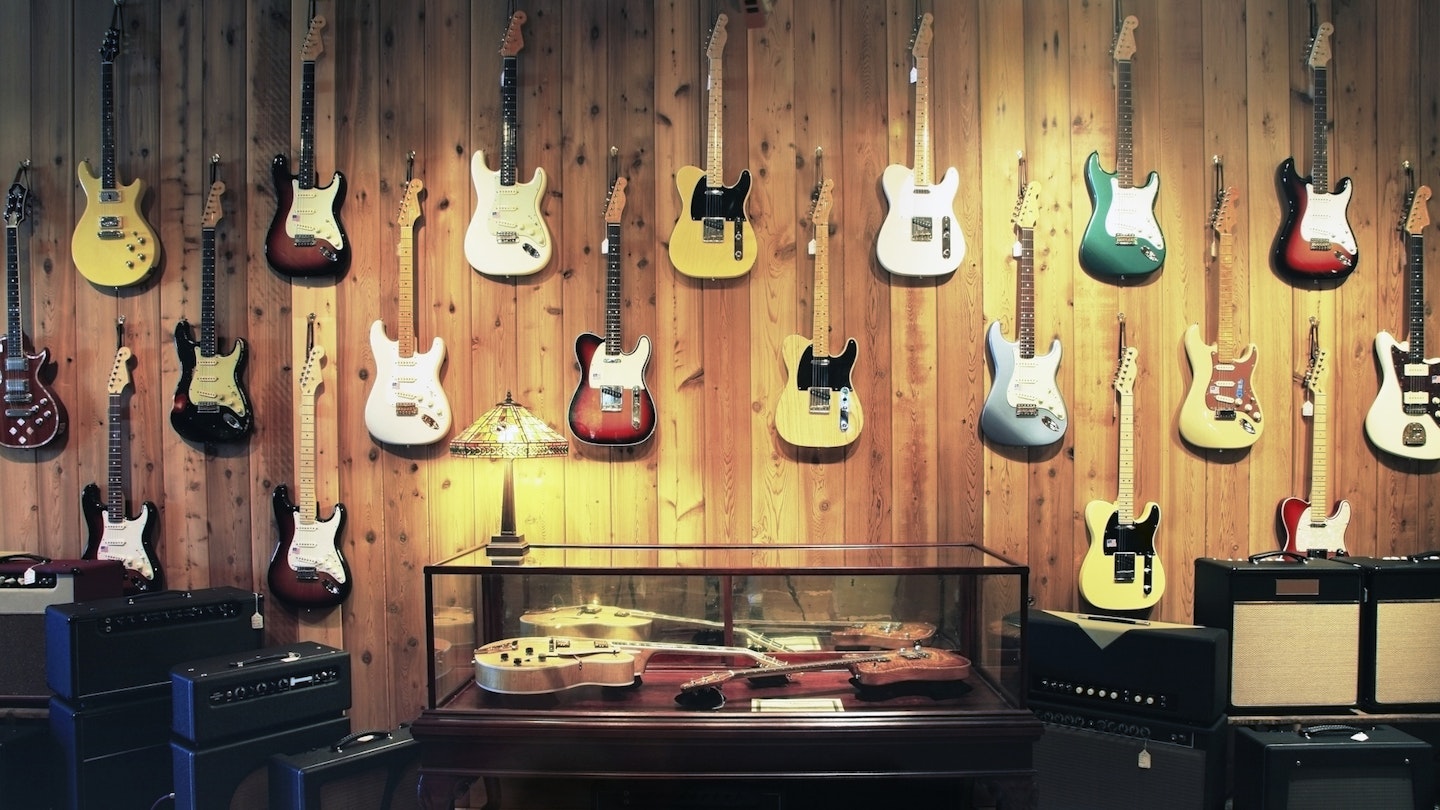It's often said that it's not the guitar, it’s the player. And that’s true – Jeff Beck always sounded like Jeff Beck, whether he was running with a Stratocaster or Les Paul. But as players, that doesn’t stop you from wanting to switch around, upgrade and experiment with new guitars.
Since 1993, MOJO have been celebrating the best that music can offer, and more often than not, there’s been a guitar or two involved along the way. Whether it’s the distinctive twang of a Telecaster or the rounded swell of a Jaguar, we understand the importance of a certain guitar to your playing and sound.
The Best Electric Guitars In 2023 At A Glance:
• Winner: Best Electric Guitar - Fender Player Stratocaster - View on PMT Online
• Runner-up - Gibson Les Paul Studio - View on Gear4Music
• Runner-up - Fender Player Telecaster - View on PMT Online
• Best Budget Electric Guitar: Yamaha Pacifica 112V - View on Amazon
Here, we’ve coiled our knowledge into a tight list of the best guitars available in 2023. Whether you’re hunting for versatility or virtuoso specificity, there will be something to scratch that itch.
The Best Electric Guitars In 2023
The best electric guitar 2023 - WINNER
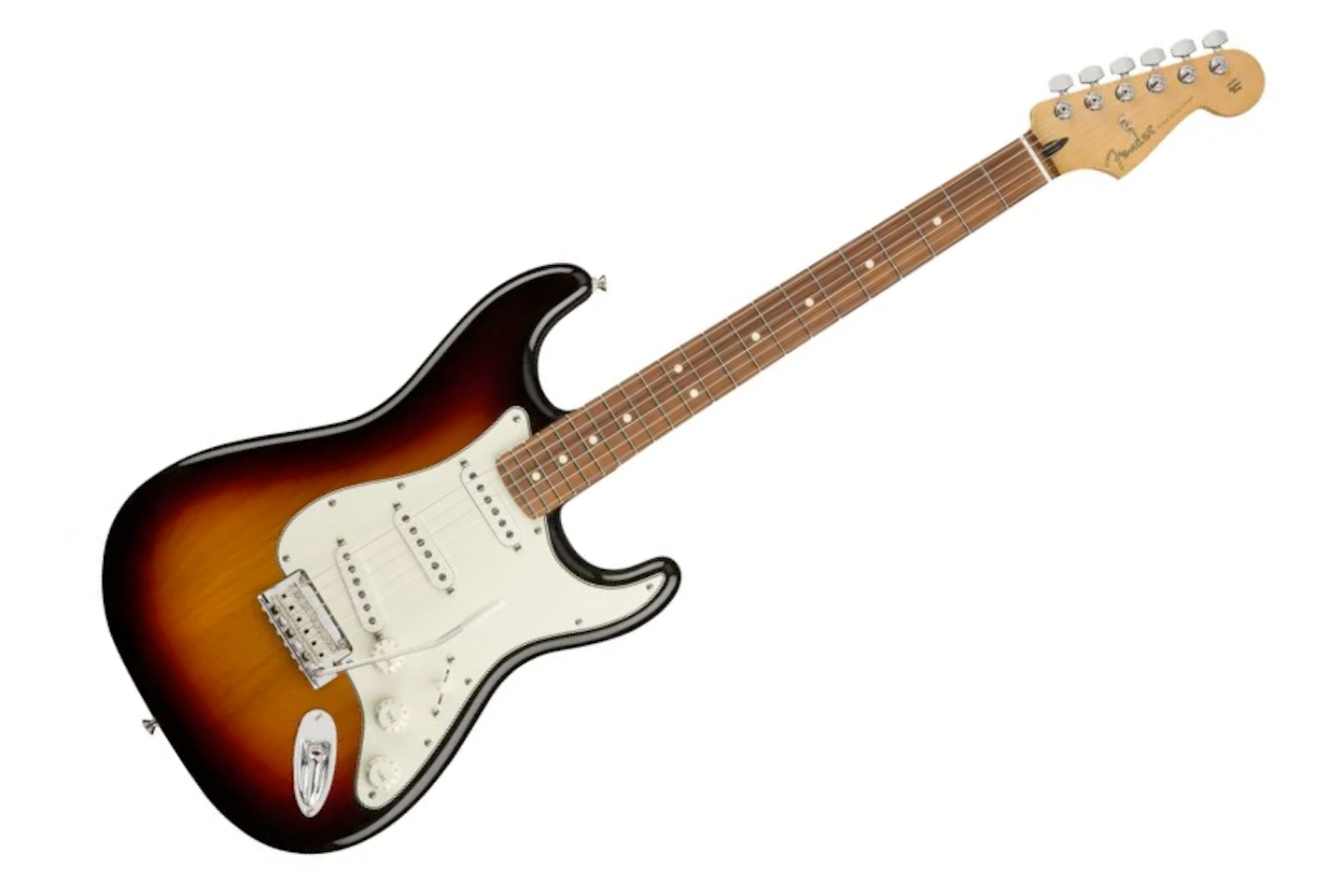
www.pmtonline.co.uk
The influence of the Stratocaster is unrivalled with only Gibson’s Les Paul snapping at its heels. But for us, it’s got to be the ever-reliable and ever-versatile Strat that takes the win. Finding its way into the hands of some of rock’s most influential players, the iconic S-shape has shared the limelight with Buddy Holly, Hank Marvin, Jimi Hendrix, Nile Rodgers, Pink Floyd’s David Gilmour, Eric Clapton and more.
So, besides joining a lineage of all-timers, why pick up this Fender Player Stratocaster? Well, the chief reason to go for this alder-bodied Strat is its versatility. It offers crisp, clear tones with a bright, articulate midrange character from the three Player Series Single-Coil pickups that suits various genres - be it the warmer sound of the neck pickup, the classic rhythm guitar punch you get from the middle, or the sharper bite of the bridge pickup, which is perfect for solos (especially when pushed through an overdrive pedal).
Not only does it sound great, but the Fender Player Stratocaster guitar is a breeze to play. It’s got a maple C-shape neck that’s comfortable for all thumb positions, and it’s a delight for players both new and experienced.
Sure, you could pick up a Strat from Fender’s still respected cadet brand Squier for a lower price, but with the high-quality components, craftsmanship and refined ergonomics, the Fender Player represents a notable improvement over its lower-priced cousin. This is a step closer to the guitars of professionals and, all things considered, it’s an absolute bargain.
Pros
- Excellent sound quality
- Comfortable to play
- Versatile for different genres and playing styles
Cons
- A relatively low-end option from Fender’s catalogue
| Body Material: | Alder |
| Neck Material: | Maple |
| Neck Profile: | Modern "C" Shape |
| Fingerboard Radius: | 9.5" |
| Frets: | 22, Medium Jumbo |
| Scale Length: | 25.5" |
| Pickup: | x3 New Player Series Single-Coil |
| Controls: | Master Volume, Tone 1. (Neck/Middle Pickups), Tone 2. (Bridge Pickup) |
| Switching: | 5-Position Blade: Position 1. Bridge Pickup, Position 2. Bridge and Middle Pickup, Position 3. Middle Pickup, Position 4. Middle and Neck Pickup, Position 5. Neck Pickup |
The best electric guitar 2023: Runner-up
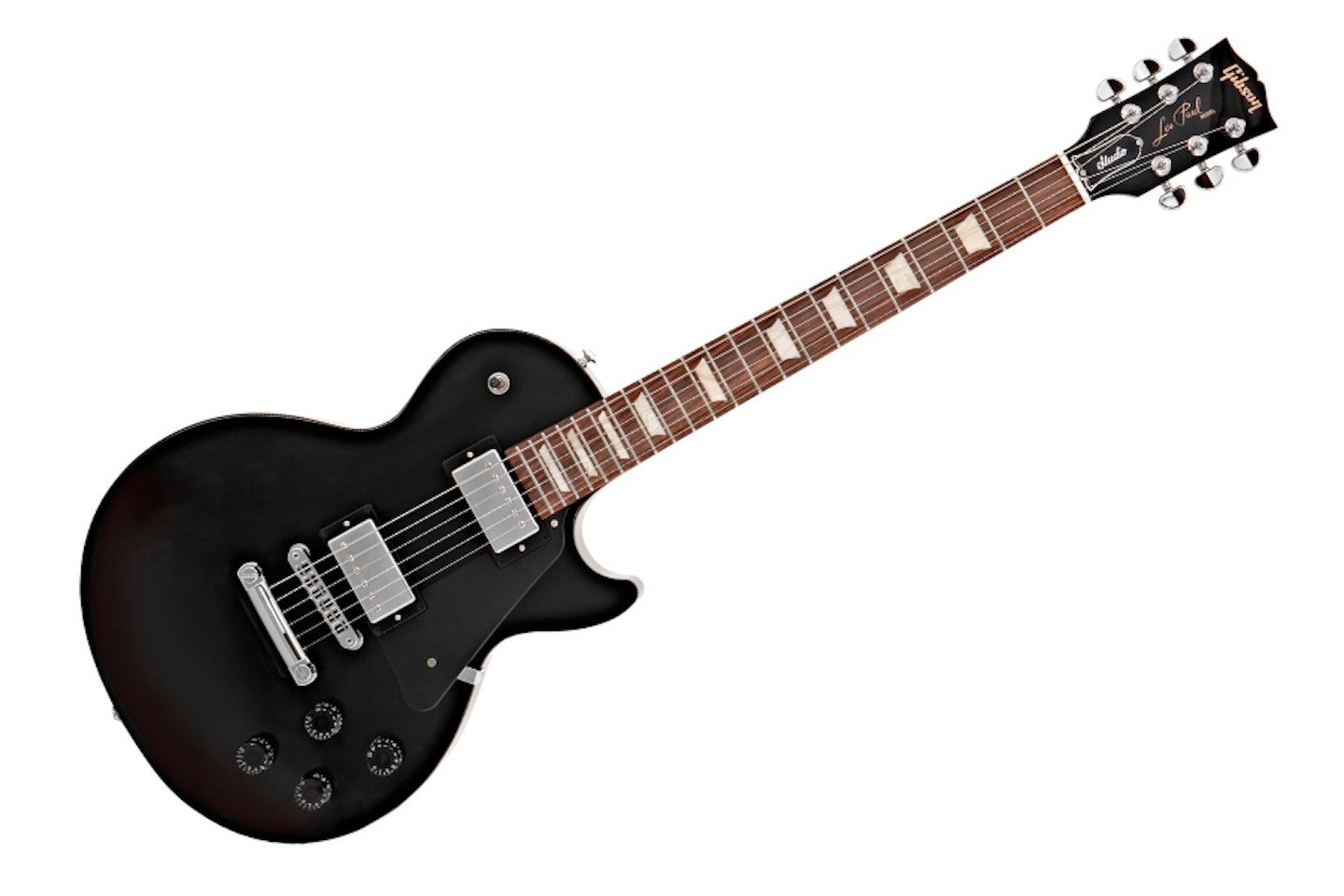
www.gear4music.com
In many ways, the Les Paul is the antithesis of the Stratocaster. Thick, weighty, and boasting unbeatable sustain, it’s long been the top pick for blues, rock and metal guitarists. Its powerful sound is down to the mahogany body and maple top. The Les Paul body's warm, full-bodied tone gets reinforced by dual humbucker pickups, which deliver a punchy, mid-focused sound that excels no matter what genre it’s working in. This versatility makes it great for both rhythm playing and solos.
This Gibson Les Paul Studio carries the Les Paul legacy well. The 498T bridge pick-up will push the treble and push through the mix, while the 490R will be ready and waiting to round things out at the neck. You can also take advantage of its coil tap, which allows you to roll off the punchy aggression of the modern humbucker to get close to the lower output ’buckers heard on classic Les Paul-starring LPs like Led Zeppelin II and the Blues Breakers’ ‘Beano’ album. The slim taper of the Maplewood neck is exceptionally well-crafted and smooth to play and the whole guitar is much lighter than vintage models – a real blend of old and new.
The Les Paul has found itself slung around the neck of many a musical icon, from Neil Young and Jimmy Page to Bob Marley and James Dean Bradfield. Pair this with a Marshall amp and you’ve got a timeless set up.
The biggest hurdle to overcome with Gibson is the price tag, especially when its more affordable offspring Epiphone is right there in the wings. Yet, there’s something to be said for the quality control, consistent performance, and durability of the real-deal Gibson. You’ll only ever need to buy the one.
Pros
- Great humbucker tones
- Robust and comfortable
- Medium jumbo frets are good for fast playing
Cons
- The price (Epiphones are a cheaper option)
| Body Material: | Mahogany |
| Neck Material: | Mahogany |
| Fingerboard Radius: | 12” |
| Frets: | 22, Medium Jumbo |
| Scale Length: | 24.75" |
| Pickup: | 490R Humbucker, 498T Humbucker |
| Controls: | 2 Push/Pull Volumes (Coil-Tap), 2 Tones & Toggle Switch |
| Switching: | 3-Position Toggle Switch: Position 1. Neck, Position 2. Neck and Bridge, Position 3. Bridge |
The best electric guitar 2023: Runner-up

www.pmtonline.co.uk
On the scene since ’51, the Fender Telecaster carries a distinct, delightful tone. Tighter than a Stratocaster, it has an unmistakable taut, cutting sound that allows notes to sing. You can hear the tell-tale Tele twang on classic albums from The Rolling Stones (Keef’s guitar of choice has been a Telecaster for decades), Bruce Springsteen, Dr Feelgood’s Wilko Johnson, Blur and countless others.
The Fender Player series has done amazing things for accessibility, letting mere mortals walk among the guitar gods for a fraction of the price of, say, anything from the Fender American ranges or the hallowed Custom Shop. And it's no exception with the Player Telecaster.
Encompassing all there is to love about the Tele, this model boasts solid build quality, while its tone and playability are in perfect harmony. It features two Player Series single-coil pickups, offering a range of punchy and twangy tones. The modern C-shape maple neck is thin and sleek, letting your thumb float wherever you prefer, making for comfortable playing. The 22-fret fingerboard provides extended range over the 21 of vintage builds.
For those wanting warmth and grunt with their Telecaster, versions loaded with humbuckers are readily available. We’d recommend picking up the Fender Player Telecaster HH MN, as it’s got all the mod-cons of this single-coiled version.
Pros
- The Telecaster’s bright and twangy tone
- C-neck is easy to play
- 22-frets
Cons
- The Telecaster sound isn’t suitable for all genres
| Body Material: | Alder |
| Neck Material: | Maple |
| Neck Profile: | Modern "C" Shape |
| Fingerboard Radius: | 9.5" |
| Frets: | 22, Medium Jumbo |
| Scale Length: | 25.5" |
| Pickup: | x2 New Player Series Single-Coil |
| Controls: | Master Volume, Master Tone |
| Switching: | 3-Position Blade: Position 1. Bridge Pickup, Position 2. Bridge and Neck Pickups, Position 3. Neck Pickup |
The best budget electric guitar 2023
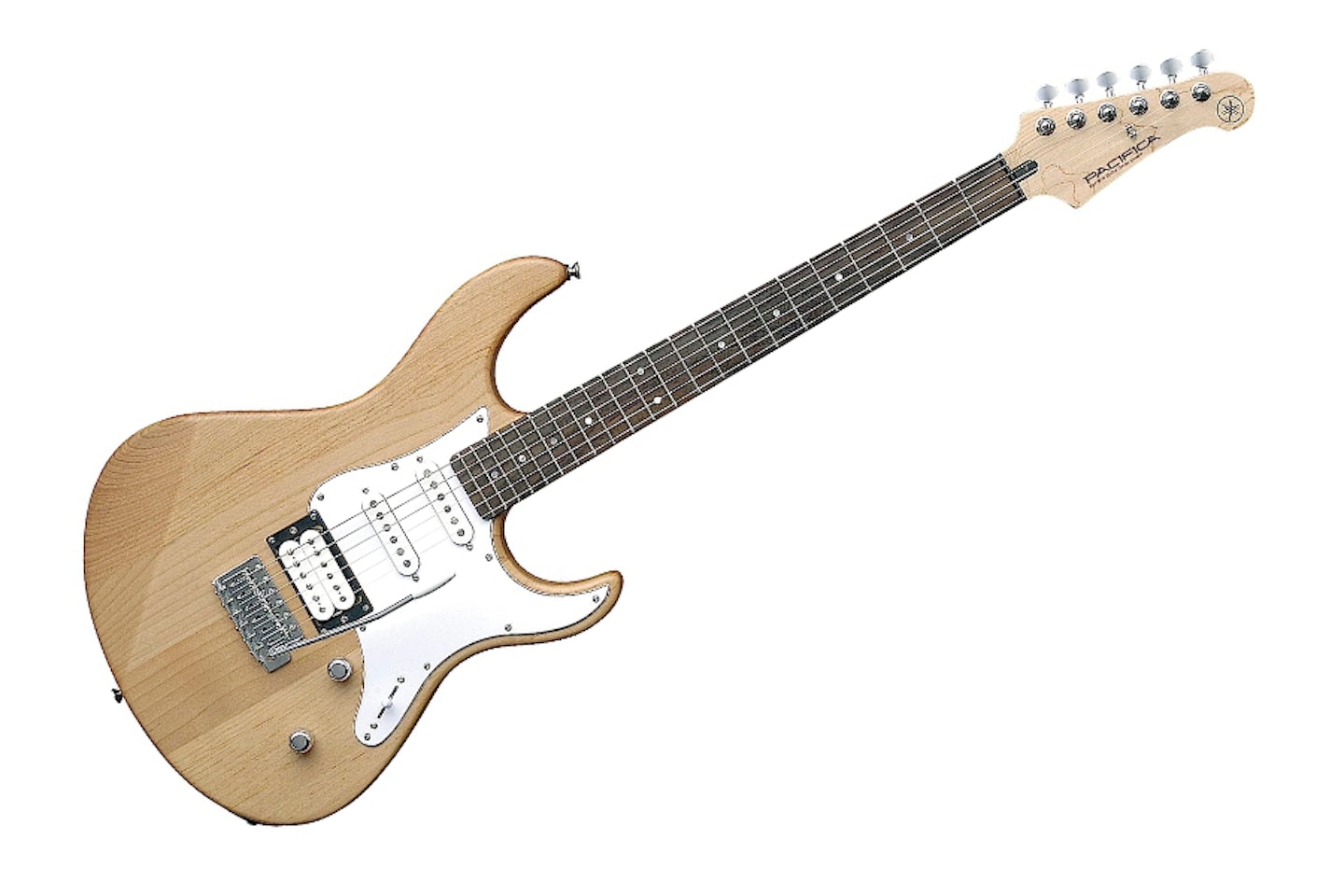
The Yamaha Pacifica 112V is such a good guitar for the money, it transcends being ‘budget’ and moves into that rarest of things in the current climate: genuine value for money.
The best thing we can say about the Yamaha Pacifica 112V is that it’s great fun to play. The natural oiliness of the rosewood fingerboard makes for smooth lead lines, as does the C-shape neck, which also has the bonus of making chord and rhythm playing a cramp-free experience.
With an alder body and maple neck, the Pacifica 112V has a rich tonality with respectable sustain and resonance. By combining Yamaha Alnico V pickups – two single coils and a coil-split humbucker – with a five-way selector, the Pacifica can slide from warm blues to hard-edged rock with a simple flick. This is a versatile guitar, providing a balanced and dynamic tone suitable for whatever you fancy noodling on at any given moment.
There’s no getting away from the fact it’s a budget Strat copy, but we’d take this over a Squier any day based on the split-coil humbucker alone. Whether this is your first guitar or just a nice little addition to your collection, it’ll have you coming back time and time again. It’s not just some cheap guitar, it’s a friend for life.
Pros
- Affordable
- Versatile and easy to play, which is perfect for beginners
- Split-coil humbucker
Cons
- Uses budget components
| Body Material: | Alder |
| Neck Material: | Maple |
| Fingerboard Radius: | 9.5" |
| Frets: | 22, Medium Jumbo |
| Scale Length: | 25.5" |
| Pickup: | Alnico V Single x 2, Alnico V Humbucker x 1 |
| Controls: | Master Volume, Master Tone with Push-Pull Coil Tap Switch |
| Switching: | 5-Position Blade: Position 1. Bridge Pickup, Position 2. Bridge and Middle Pickup, Position 3. Middle Pickup, Position 4. Middle and Neck Pickup, Position 5. Neck Pickup |
The best vintage-look electric guitar
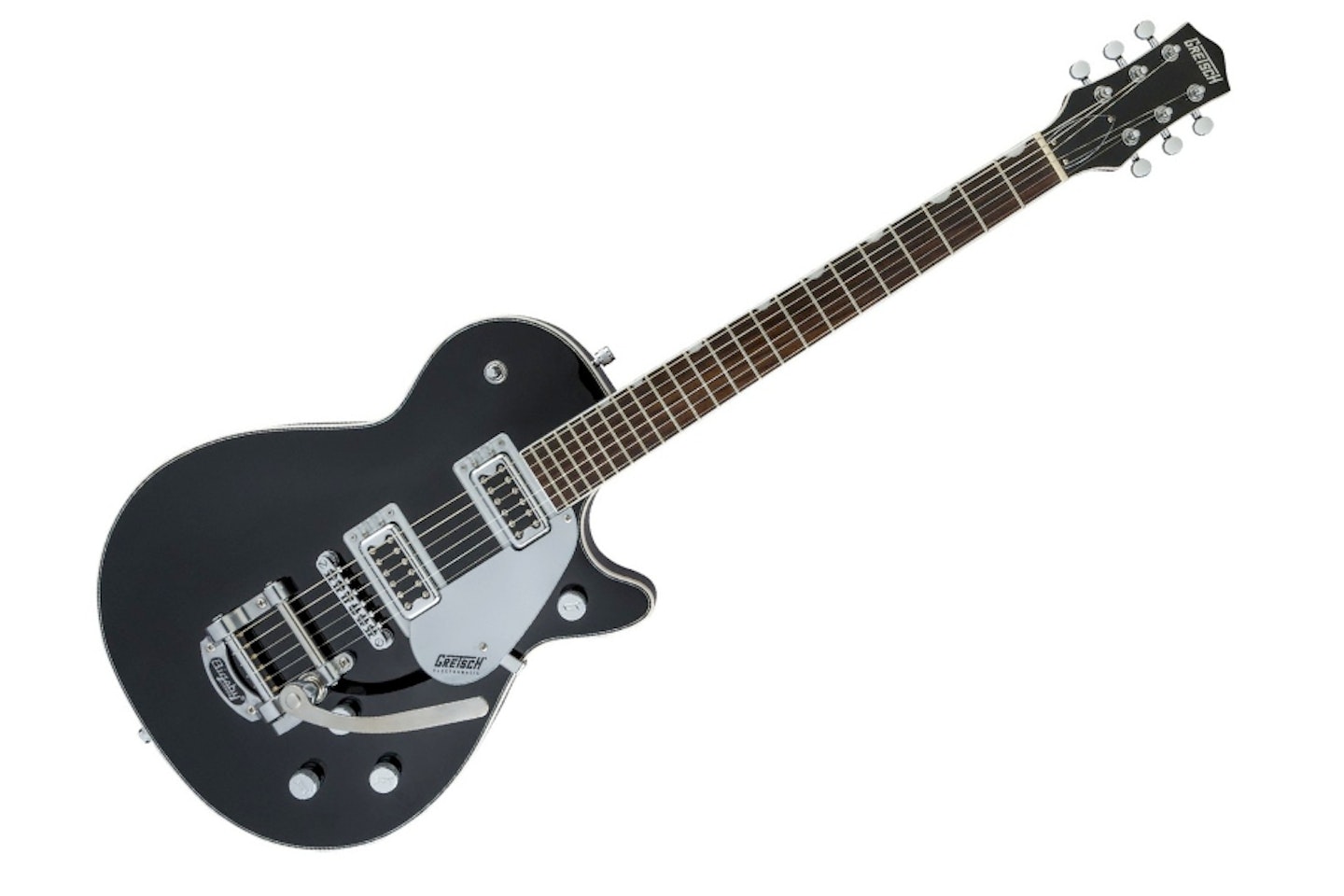
www.gear4music.com
It doesn’t matter what music you want to play. The Gretsch G5230T Electromatic Jet can deliver, and you’ll look great in the process. Behind its classic-cool facade, the G5230T hosts a range of tricks which refine the beloved big Gretsch tone. It’s best to think of it as a semi-solid guitar – though its body is mahogany, known for its darker expressions, it’s chambered, meaning there are hollow sections hidden within that improve the mid-tones. As a result, it’s exceptionally balanced and characterful. Coupled with the dual Blacktop Filter'Tron pickups, the G5230T Electromatic is primed for tone-rich jazz or punched-up punk.
A real bonus with this model is the Bigsby B50 vibrato tailpiece, which adds a vintage whammy wherever required. No matter your style, you’ll be giving your licks a rockabilly lean with the Bigsby – it’s too enjoyable not to. Affordable and reliable, this model delivers the distinctive Gretsch sound with modern versatility.
Pros
- Filter'Tron pickups can handle clean and dirty tones well
- Beautiful design
- Bigsby vibrato
Cons
- Hollow sections increase chance of feedback
| Body Material: | Chambered Mahogany |
| Top Material: | Arched Laminated Maple |
| Neck Material: | Mahogany |
| Neck Profile: | Thin "U" Shape |
| Fingerboard Radius: | 12" |
| Frets: | 22, Medium Jumbo |
| Scale Length: | 24.6" |
| Pickup: | x2 New Player Series Single-Coil |
| Controls: | Master Volume, Master Tone |
| Switching: | 3-Position: Position 1. Bridge Pickup, Position 2. Bridge and Neck Pickups, Position 3. Neck Pickup |
The best electric acoustic guitar

www.gear4music.com
ounded in 1833, Martin is one of the oldest names in guitars and has been relied on by the likes of Johnny Cash, Bob Dylan, Neil Young and Elvis Presley. The Martin D-X1E Mahogany Dreadnought combines the brand’s classic acoustic sound with electronic amplification.
The dreadnought shape is probably the most popular acoustic shape around – there’s a good chance you’ve played one, even if you didn’t know it. Though there are louder acoustic shapes available – such as the jumbo – the dreadnought keeps a balance between powerful sound and versatility. The D-X1E has a mahogany body and offers a balanced and warm tonal response with enhanced projection.
This guitar is equipped with a Fishman MX pickup and battery-powered preamp which ensures excellent amplified sound and stage-ready performance. It’s perfect for playing at home and at a gig or running through effect pedals. Just make sure if you are going live to have a spare 9V battery to hand.
Notable on this D-X1E is the ‘Performing Artist’ neck. It’s Martin’s variation on a C-shape, notable for being nice and shallow. This makes for an easy play when compared with some other acoustics, which often have thick, U-shaped necks – this modern twist is especially welcome for anyone coming from a fully electric guitar.
Pros
- Lovely warm tones
- Build is comfortable for playing standing or sitting
- Durable
Cons
- Pickup requires a battery
| Top Material: | Mahogany |
| Neck material: | Birch Laminate |
| Frets: | 20 |
| Scale Length: | 25.5" |
| Pickup: | Fishman MX |
The best electric guitar for retro 60s enthusiasts
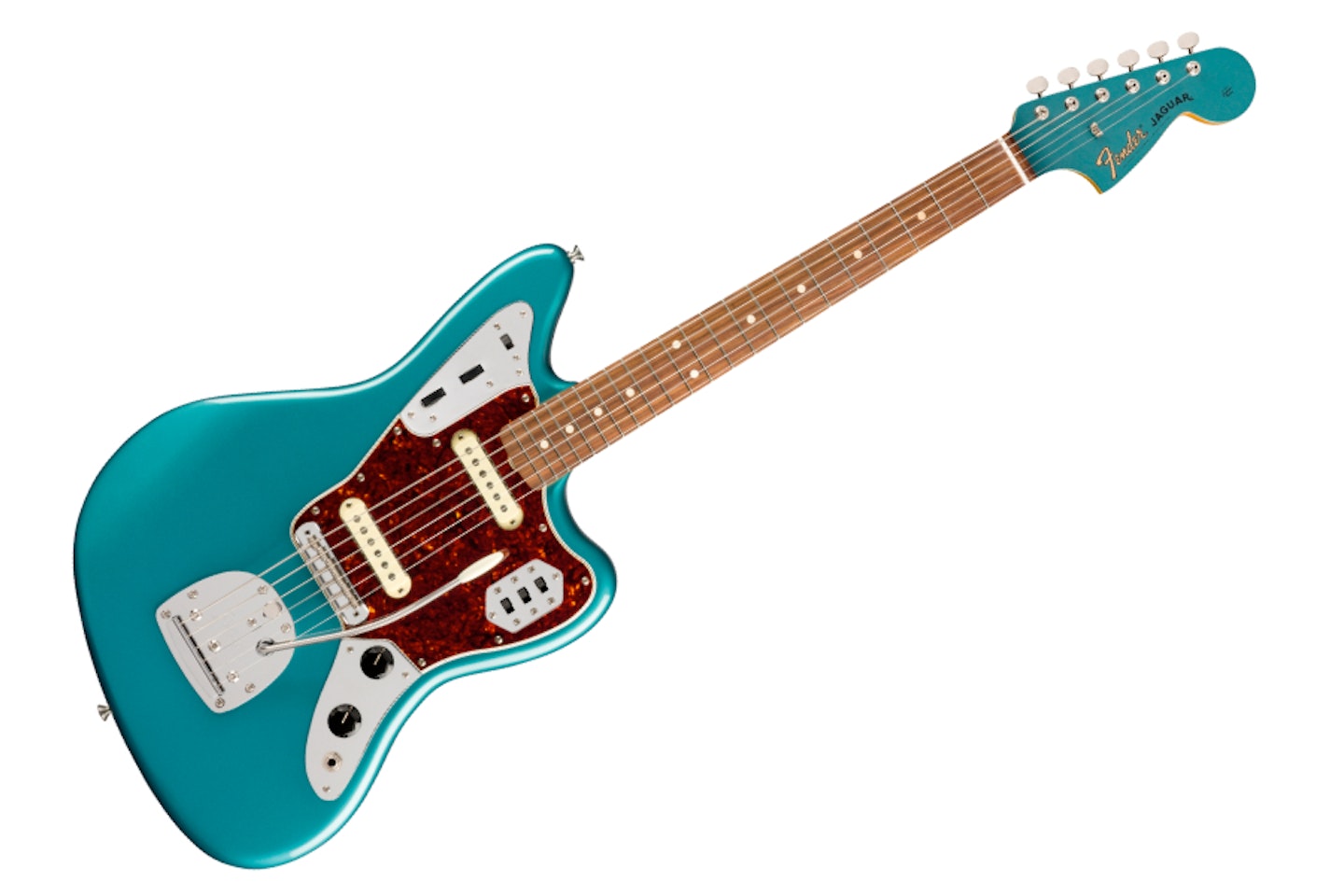
www.fender.com
With the rise of surf rock, Fender released the original Jaguar in 1962. Distinct not only because of its none-more ’60s aesthetic, the Jag is also renowned for its dual-circuit pick-up controls, which give you immense control over the tonal output. It’s a sonically powerful guitar with a superb low-end range and stunning mid-high sparkle.
Here, these Jag roots get celebrated. The Vintera ’60s brings the distinctive round tone and playability of its vintage ancestor home, just with modern craftsmanship and reliability. It comes with two single-coil pickups, and it’s even got the floating tremolo tailpiece to get that pure-surf wobble off the ground.
The Jaguar fell out of favour during the ’70s and found itself discontinued. It saw a resurgence in the ’90s, however, and has remained a common sight among indie and grunge outfits ever since, due in no small part to Johnny Marr and Kurt Cobain, who favoured a souped-up double humbucker version.
Pros
- Bright and jangly Jag sound
- Classic design
- Versatille tone options
Cons
- Tremolo can affect tuning
| Body Material: | Alder |
| Neck Material: | Maple |
| Neck Profile: | “Mid-60s C" Shape |
| Fingerboard Radius: | 7.25" |
| Frets: | 22, Medium Jumbo |
| Scale Length: | 24" |
| Pickup: | x2 Vintage-Style Single-Coil Jaguar |
| Controls: | Selector Switch, Rhythm Circuit Volume and Tone, Lead Circuit Volume and Tone, Pickup On/Off Switches, Tone Circuit Switch |
| Switching: | 3-Position Blade: Position 1. Bridge Pickup, Position 2. Bridge and Neck Pickups, Position 3. Neck Pickup |
The best semi-acoustic electric guitar

www.pmtonline.co.uk
The Gibson ES-335 has been part of rock and roll since the beginning. Originally favoured by Chuck Berry and B.B. King, it’s since been taken on by Johnny Marr, Noel Gallagher, Suede’s Bernard Butler and Dave Grohl.
The Gibson 335 is a hybrid of hollow-body and electric guitar designs, combining both worlds to create a sound greater than the sum of its impressive parts. It has incredible resonance and warmth but plenty of bite to hand out when the dials get pushed. So, if the Gibson is so good, why recommend the Epiphone version?
The Epiphone ES-335 is part of the brand's ‘Inspired by Gibson’ range. Though it doesn’t boast that Gibson badge, it’s worth sacrificing as you won’t find a worthwhile Gibson ES for less than double this superb tribute.
We love this Epiphone ES-335, which features dual Alnico Classic PRO humbuckers, delivering vintage-inspired tones with warmth, clarity, and versatility. The neck profile means that lead lines and chords feel effortless, and it generally feels like a quality crafted piece of kit.
Pros
- Rich, warm hollow-body sound
- Great double humbucker pickups
- Beautiful design
Cons
- Feedback is an issue for hollow guitars
| Body Material: | Maple |
| Neck Material: | Mahogany |
| Neck Profile: | “Rounded C" Shape |
| Frets: | 22, Medium Jumbo |
| Scale Length: | 24.72" |
| Pickup: | x2 Alnico Classic PRO |
| Controls: | 2 x Volume, 2 x Tone, CTS Potentiometers |
| Switching: | Switching: 3-Position toggle: Position 1. Bridge Pickup, Position 2. Bridge and Neck Pickups, Position 3. Neck Pickup |
The best guitar for high end versatility
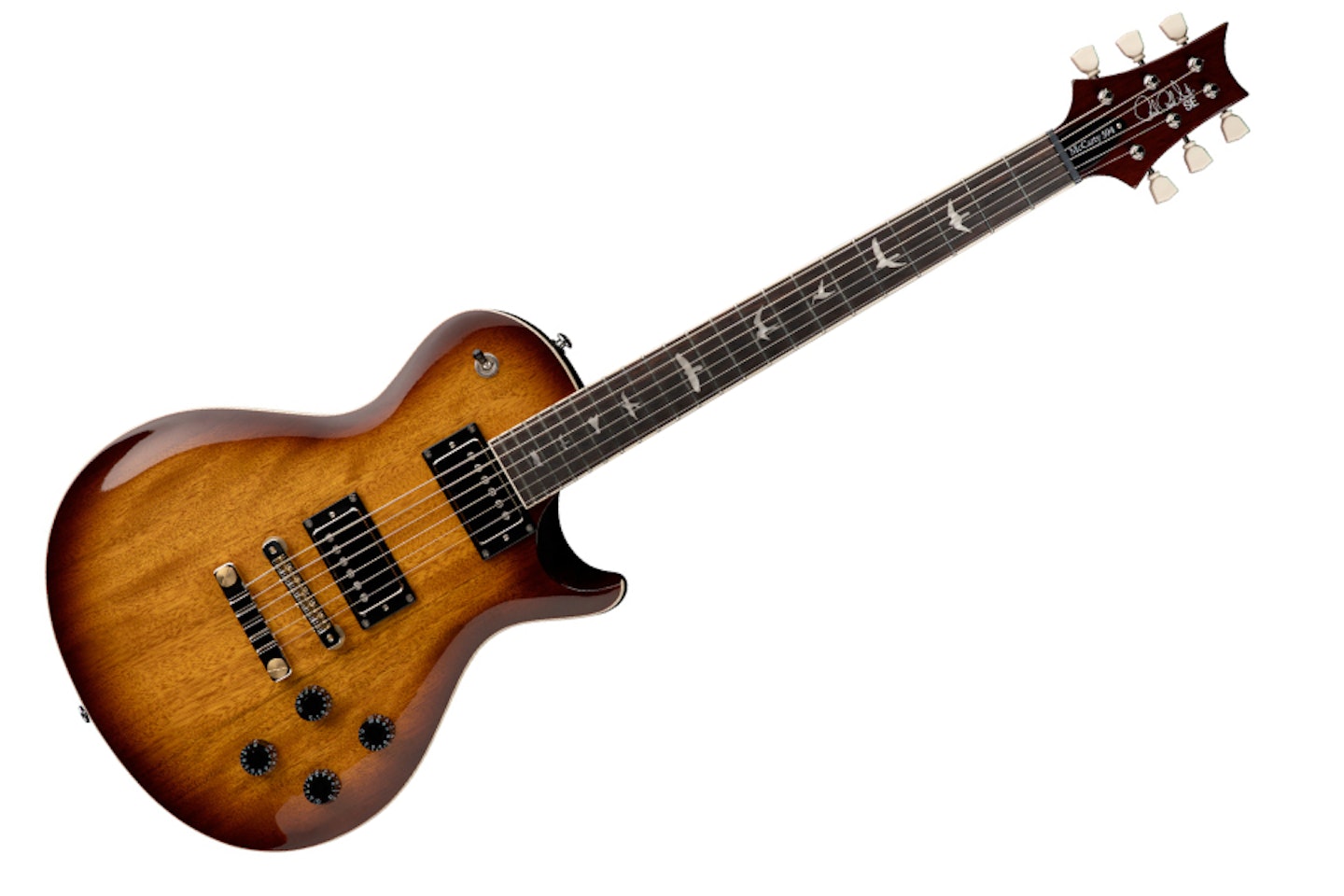
www.pmtonline.co.uk
If Paul Reed Smith is known for one thing, it’s craftsmanship. With the SE McCarty 594, the precision brand has fused this eye for detail with vintage sensibilities to create a wonderful, Les Paul-evocative instrument. Equipped with dual PRS 58/15 "S" humbuckers pickups, the guitar can deliver retro-modern tones with clarity, warmth, and a dynamic response. But it’s not only a humbucker sound you'll get from the McCarty 594 – thanks to the push/pull tone controls, you can switch to single-coil mode for cut-down bottom and sharper sparkle.
Roll back the tone and sit in the neck pickup, and you’ll be treated to sounds that wouldn’t be out of place on some fusion records, à la Santana. Switch over to a higher register and you’ll be able to capture tones not dissimilar from classic Les Paul rock songs – fingerpickers can get close to ZZ Top’s staccato blues, while plectrums and a healthy dose of pentatonic sear like Guns N’ Roses’ Slash.
The tobacco finish complements the cutaway nicely, while the chamfering on the lower horn avoids some of the fret-access issues encountered on similar single-cutaway guitars.
Pros
- Rich humbucker pickups that can coil tap
- Quality woods used in construction
- Reputable PRS playability
Cons
- Limited finish choices
| Body Material: | Mahogany |
| Neck Material: | Mahogany |
| Neck Profile: | “Rounded C" Shape |
| Fingerboard Radius: | 10" |
| Frets: | 22, Medium Jumbo |
| Scale Length: | 24.6" |
| Pickup: | x2 58/15 LT “S” |
| Controls: | Two Volume and Two Push/Pull Tone Controls with 3-Way Toggle Pickup Switch on Upper Bout |
| Switching: | Switching: 3-Position toggle: Position 1. Bridge Pickup, Position 2. Bridge and Neck Pickups, Position 3. Neck Pickup |
FAQ
Pickups: Single coil versus humbucker
Single coil pickups consist of one magnet wrapped with a single coil of wire. They are known for their bright, clear, and articulate tone, producing a crisp and twangy sound that suits genres like country, blues, and funk. However, they can be susceptible to electrical interference or hum. You'll find them on guitars such as Fender Stratocasters and Telecasters.
Humbucker pickups "buck" the hum or noise associated with single coils. They feature two coils wound in opposite directions, connected in series or parallel. Humbuckers offer a thicker and warmer tone with increased output and sustain. They produce a smooth and creamy sound, with a rich midrange and a tighter low end, making them popular in rock, metal, and jazz. Humbuckers also have higher resistance to interference and noise. Guitars like Gibson Les Pauls often come equipped with humbuckers.
Ultimately, the choice between single coil and humbucker pickups depends on personal preference. Some guitarists prefer the brightness of single coils, while others the power of humbuckers. Many guitars combine both pickup types, providing a versatile range of tones to explore.
What’s a split coil pickup?
A split coil pickup is a type of humbucker that lets you switch between the humbucker sound and a single-coil sound. This can be achieved because a humbucker consists of two coils.
There are several ways to control a split coil pickup, including a pick-up selector, push/pull tone knobs and on-body switches.
Which guitar shape is for you?
When it comes to electric guitars, the choice between single-cutaway, double-cutaway and hollow body designs can greatly impact playing experience. Not only that, but cross-pollination between guitar designs means that you’re often contending with elements of more than one guitar standard. In this guide, we'll delve into the pros and cons of each type.
Single-cutaway guitars: The Gibson Les Paul is a prime example of single-cutaway guitar and is well known for its classic look. Thanks to the mass of material making up the guitar, they offer exceptional sustain. However, the absence of a second cutaway can pose challenges when reaching higher frets.
Double-cutaway guitars: The Fender Stratocaster is pretty much the archetypal double-cutaway design. Guitars in this style feature two cut-outs, allowing for greater manoeuvrability on the fretboard and easier access to the highest frets. Due to there being less material on the guitar, they tend to be lighter and boast more comfortable curves, enhancing playing comfort.
As there is less material on the guitar body, there can be some reduction in sustain. However, sustain is also affected by the wood used and neck construction.
Hollow-body guitars: Hollow-body guitars have a completely different construction style and combine electric and acoustic guitar elements. Hollow-body guitars offer a unique blend of acoustic resonance and electric versatility, making them a mainstay among jazz and blues players.
A hollow-body guitar design can be combined with single-cutaway and double-cutaway shapes, creating semi-hollow guitars. The Fender Thinline range is an example of this practice.
Archtop guitars: Archtops are hollow-bodied guitars with a distinctive arched top and f-holes. They are liked by jazz musicians for their warm, resonant tones and ability to project in ensemble settings – think Wes Montgomery. The combination of floating pickups and carved tops contribute to their unique sound and aesthetic appeal.
Archtops have also been adopted by rockabilly players. Archtops can be fully hollow-bodied like the Gretsch White Falcon or semi-solid/semi-acoustic like the Gibson ES-335.
Wood matters: Electric guitars are crafted from various kinds of wood, with mahogany, maple, alder, and ash being the most common. Each wood lends its own characteristics to tone and weight. Mahogany gives a dark, warm sound thanks to its dense nature and rich tonal characteristics. Ash is a good selection for a brighter tone as it has pronounced upper-midrange clarity.
Often, manufacturers will combine woods to alter both the sound and the feel of a guitar. For example, Gibson is known for adding a maple top to mahogany to add some brightness to guitar’s tone. Meanwhile, Fender will stray from its standard maple fingerboard, known for its slick playability and sharp tone, to the smooth warmth of rosewood fingerboards.
Plenty of choice exists, so investigate your chosen guitar’s construction and play different combinations before making your final pick.
Guitar necks explained
The shape of a guitar neck has a huge impact on playability and comfort, as well as sound. Your personal preference, playing style and hand size all play a role in choosing the right neck shape. We recommend trying out different neck shapes to find the one that feels the best for you.
Here’s a list of the most common guitar neck shapes. Note that some manufacturers refer to neck shapes using branded names, but often, they can fit into one of these generic categories.
C shape: The C-shaped neck is a popular choice found on many guitars. It has a comfortable rounded profile that fits well in the hand, providing a balanced feel for both chords and lead playing. Often, players enjoy this neck shape as they have more flexibility on how they use their thumb.
U shape: The U-shaped neck has a more pronounced curve, giving a chunkier and fuller grip, suited for players with big hands or those who prefer a substantial-feeling neck.
V shape: The V-shaped neck has a V-like contour. It provides a vintage-style feel, offering more grip and stability. The degree of V-shape can vary from subtle to severe.
D shape: The D-shaped neck resembles the letter "D" and offers a flat back with rounded edges. It can provide a comfortable grip, balancing the bulkiness of a U shape with the slimmer feel of a C shape.
Slim taper: A modern neck, the slim taper is known for having a thinner profile that’s well-suited to faster playing styles.
‘Tremolo’ arm versus Bigsby
The Bigsby is a type of vibrato system with a unique design with a tension bar and a movable arm, best known for their employment on Gibsons and Gretsches. They are known for delivering a subtle vibrato effect.
The Fender-style tremolo arm – a time-honoured misnomer since ‘tremolo’ is technically a variation in volume and not pitch – is sometimes called a whammy bar. It’s attached to the bridge or tailpiece and can be pushed or pulled to create pitch variations. Its effect is very pronounced – even more so if you choose one of the ‘locking’ types favoured by hard rock and heavy metal guitarists looking for extreme ‘dive bomb’ effects.
They are both great, which you prefer is down to personal choice.
BECOME A MOJO MEMBER today and receive every new issue of MOJO on your smart phone or tablet to listen to or read. Enjoy access to an archive of previous issues, exclusive MOJO Filter emails with the key tracks you need to hear each week, plus a host of member-only rewards and discounts.
